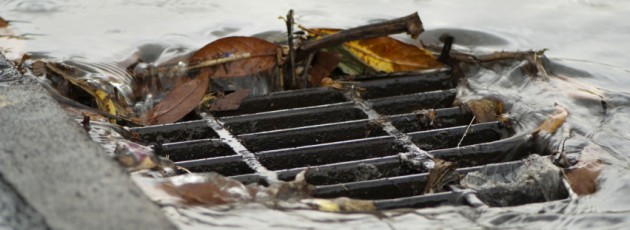
The arrival of autumn in the Pacific Northwest usually means rain — and lots of it. In a climate like ours, surface water problems and seasonal flooding are frequently recurring and expensive issues for condominium associations. In fact, condominiums are especially prone to flooding and drainage issues because paved amenities and the typical location of condominium projects usually means there is a prevalence of impervious surface areas in and adjacent to condominium property. When such problems do develop, how best should associations seek to prevent or mitigate damage to their property?
The basic law in Washington regarding surface water is referred to as “the Common Enemy Doctrine.” That is, the law considers storm water and flooding to be the “common enemy” of all property owners, and it’s therefore every owner for herself when it comes to dealing with the common threat. The general rule is that landowners may use any and all means to protect their land from unwanted surface water, without liability to neighboring land owners,i however, the law has carved out three exceptions to the rule. First, landowners may not inhibit the flow of a naturally occurring water flow. Second, landowners may not collect and channel water, whether by gutter, culvert, street, or otherwise, onto a neighbor’s land in a manner or quantity different from the water’s natural flow. And third, landowners who do alter the flow of surface water in any manner, must act in good faith and avoid unnecessary damage to adjacent property. This last due care exception does not consider the utility of the project, but whether the landowner minimized any arbitrary impacts to neighboring land.
In addition to the common law rules, surface water flows are also subject to a myriad of government regulations. Storm water is considered a potential source of “non-point source pollution” regulated under the federal Clean Water Act’s Storm Water Program. Additionally, Washington’s Water Pollution Control Act, which is implemented and overseen by local governments under the authority of the Department of Ecology, has resulted in implementation of many local regulations, permitting requirements and design control guidelines that must be strictly followed for any project that affects storm water discharge or alteration of surface water flow.
So what does this mean for associations facing a response to periodic flooding or drainage issues? Perhaps the worst thing that an association can do is to install an ad hoc “repair” such as erecting a barrier or culvert to channel surface water away from association property. Not only can this open up the association to liability for damage caused to neighboring property, it may also result in fines or other regulatory action by local governments. Conversely, it is perhaps equally perilous for an association to fail to adequately repair a flooding or drainage problem, or worse yet, to fail to respond to the problem at all. Not only does this likely result in increased maintenance costs, it would also expose the association to liability to homeowners and also create a raft of insurance coverage problems.
Instead, it turns out that the critical first step in any response to a flooding or drainage issue is simply to identify the source and cause of the problem so that a proper response may be designed and implemented. This may seem obvious, but the source or cause may not always be easily ascertainable. It is critically important, however, because not only will it allow for design of a more effective repair, it will also allow the association to maintain a critical element necessary for a “Common Enemy Doctrine” defense in the case of a later suit by a downstream property owner—namely that the repair was installed in good faith and in a manner reasonably calculated not to damage adjacent property. Fortunately, local government agencies often have resources to assist an association with just such an investigation,ii which not only may offset the cost, it can also allow the association to get a head start on understanding any regulatory and permit requirements necessary for the repair.
References
i See generally Currens v. Sleek, 138 Wn. 2d 858, 861, 983 P. 2d 626 (1999).
ii One local example is Snohomish County’s Urban Drainage Investigations & Technical Assistance Program.
Surface Water Management Division


